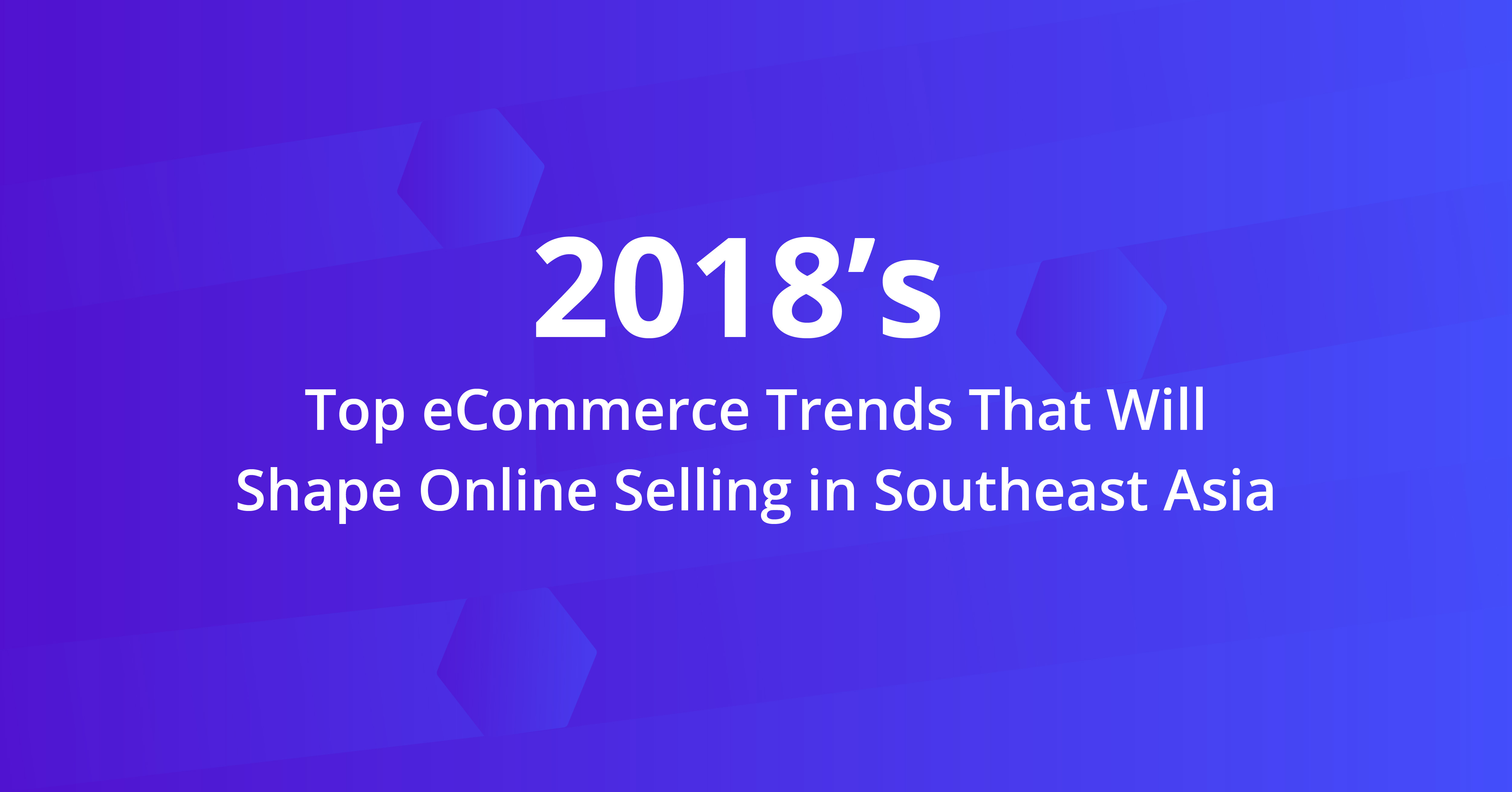
Blogs

As online selling is a fairly new retail method, ‘change’ is a common expectation for almost all eCommerce sellers. Based on trends from the past, it is clear that online retail in Southeast Asia is growing phenomenally. The growth of Alibaba and western eCommerce giant Amazon (now in the east) backs the potential of online selling here.
So, what are the top eCommerce trends online sellers will follow in 2018 to make the most of this growing industry? We have reviewed the activities and behavior online sellers and shoppers are leaning towards and listed these as the main trends to focus on this year.
Top eCommerce Trends of 2018
1. Multichannel Selling Tools Will Be Highly Popular
With the explosion of online selling, the number retail sites have multiplied. Selling on more than one marketplace reduces selling risks and improves brand visibility online. But, the problem that arises then is order and inventory management on different marketplaces. To overcome this, eCommerce technology called, multi-marketplace selling software has been designed. As more sellers register on multiple marketplaces the dependence on this software increases. To understand how multi-marketplace eCommerce technology works click here!
2. WMS will be Replaced with eWMS
The dawn of eCommerce has changed the way warehouses are managed too. Warehouse management systems (WMS) were introduced to streamline stocks, operations and manpower. But, the moment eCommerce stole the spotlight, these systems turned inadequate and ecommere technology gave rise to eWMS. As online selling gets more attention it will force retailers, brands, distributors and 3PLs to use eWMS for more successful eCommerce management.
3. Sellers & Organizations will Follow an Omnichannel Approach
Besides selling on multiple online shopping sites, eCommerce sellers will also start selling offline. People love the convenience of shopping from their homes, but there are some that prefer offline shopping to ensure they get what they see. Besides this, with offline outlets, it’s far easier to provide after sales services which customers love. An online and offline presence will work in tandem as many people conduct online research before buying offline. Reverse patterns may also be expected, with buyers going offline to test out products before purchasing them online. Amazon is already taking the offline route in a subtle way by setting up warehouses to enable quicker delivery wherever it operates. Alibaba launched three offline supermarkets under the brand Hema Stores in Beijing and Shanghai. These are expected to improve customer experience, capture new customers and improve order fulfilment for its online marketplaces.
4. Focus on B2B eCommerce
In 2017, the gross merchandise volume (GMV) of Business-2-Business (B2B) online transactions was at $7.66 trillion worldwide compared to 2013’s GMV of $5.83 trillion. When choosing to specialise in this segment of online selling, make it a point to study it before diving in. Today’s workforce is made up of millennials who are mobile savvy and interested in eCommerce technology. As B2B eCommerce blooms, more of its shoppers expect customer-centric services. Brands that offer this are the most successful in this sector.
5. Augmented Reality Will be in Demand
The one thing eCommerce lacks is the touch and feel aspect of shopping. Sure, following the offline approach will be helpful, but not all eCommerce sellers can afford to follow eCommerce trends like this. So, the next best thing is to overcome this shortcoming with augmented reality (AR). With the help of AR, customers can see what products look like on them and in their surroundings. IKEA Place allows online customers to place virtual furniture in your homes to see if it matches the surroundings. The same will be the case with platforms selling fashion goods.
It’s important to know the top eCommerce trends they help online sellers stay up-to-date with what customers need. Knowing them in advance allows sellers to implement them before competitors do. Stay aware of the latest online selling craze by following industry leaders and our regular posts on OST.
Interested in transforming your existing multichannel selling, retailing, or eCommerce service business? Speak with our expert now.
Integrate your online channels in few steps, and try out all features of the SelluSeller
Receive the latest insights, reports, research papers, news bytes, and important announcements from Anchanto.